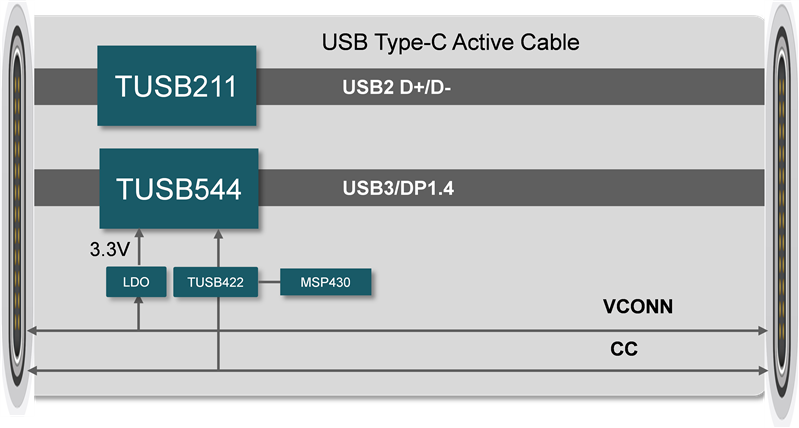SSZT991 august 2017 TUSB1002 , TUSB1042I , TUSB1046A-DCI , TUSB211 , TUSB212 , TUSB212-Q1 , TUSB213 , TUSB213-Q1 , TUSB214 , TUSB214-Q1 , TUSB215 , TUSB215-Q1 , TUSB501 , TUSB522P , TUSB542 , TUSB544 , TUSB546A-DCI , TUSB551 , TUSB564
The rapid growth of USB Type-C enables a unified interface to deliver data, video, audio and power through a single connector. USB Type-C™ not only supports the latest USB data rate of 10Gbps, it also enables up to 100W power delivery through the same cable carrying the data traffic simultaneously. Type-C has reversible plug orientation; it also allows host and device to perform data role swap and power role swap providing ease of use and flexibility. In addition, USB Type-C can also deliver high resolution video protocol over Type-C interface, eliminating different cable and connector needs thus greatly simplify and enhance user experience. Billions of devices will use the USB Type-C interface to connect in the coming years.
You can integrate many popular protocols such as DisplayPort™, Thunderbolt and High-Definition Multimedia Interface (HDMI) into USB Type-C through Alternate Mode. Ensuring signal integrity for these various protocols over four high-speed lanes represents a challenge for designers, however.
The TUSB544 is the industry’s first USB Type-C Alternate Mode multiprotocol bidirectional linear redriver supporting USB 3.1 at 5Gbps and DisplayPort 1.4 at 8.1Gbps. TUSB544 resolves signal-integrity issues at the USB Type-C connector to compensate channel loss for USB hosts and devices, thus output clean Type-C signals. For DisplayPort source or sink devices, placing the TUSB544 inside the USB Type-C cable enables the use of longer cables and improves signal quality.
There are many use cases for the TUSB544 in a system. Some central processing units (CPUs) and mobile processors have an integrated USB Type-C multiplexer in the processor; the CPU will multiplex 4 DisplayPort™ lanes and 2 USB lanes into 4 high speed output, each lane can be individually configured as USB or DisplayPort. If you place the TUSB544 near the connector – on either the transmitter or receiver side – you can configure the four USB Type-C lanes as negotiated by the source and sink devices and redrive the signal in either direction according to your protocol needs. For example, the signal over USB Type-C can be USB only, four-lane DisplayPort only, or two-lane USB and two-lane DisplayPort. Figure 1 shows an end-to-end USB Type-C solution using the TUSB544 as a redriver.
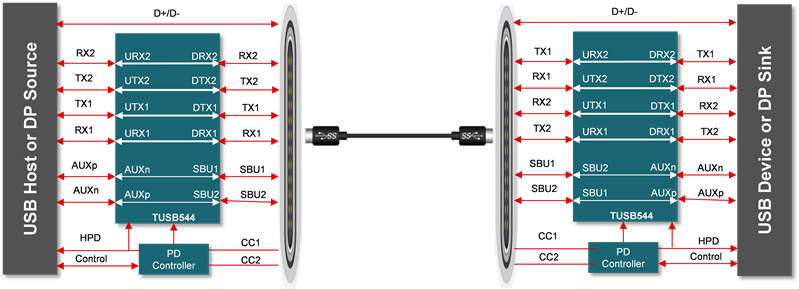 Figure 1 Enabling Better Signal Quality
with the TUSB544 as an End-to-end Solution
Figure 1 Enabling Better Signal Quality
with the TUSB544 as an End-to-end SolutionThe TUSB544 linear redriver can reduce design complexity and provide device placement flexibility in your system. The device particularly benefits DisplayPort applications because it is transparent to link training, establishing a better channel with a minimal bit error rate for clear video displays.
Another use case for the TUSB544 is to create active cable for extending USB Type-C cable lengths because you can place the redriver inside the cable to compensate for cable loss. Figure 2 shows the eye diagram of a 3m USB Type-C cable without any redriver. The red circles indicate that the eye diagram is failing the eye mask.
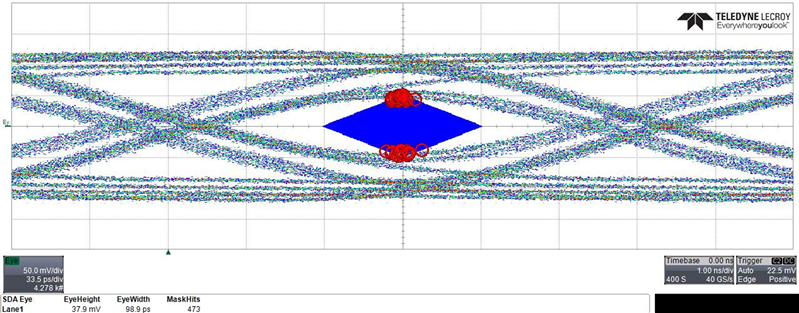 Figure 2 A 3m USB Type-C Cable Failing
the Eye Diagram
Figure 2 A 3m USB Type-C Cable Failing
the Eye DiagramBy applying the TUSB544 onUSB Type-C high-speed lanes and the TUSB211 on USB 2.0 lanes, you can improve the signal quality for all USB 3.1, DisplayPort and USB 2.0 signals at the USB Type-C interface. Figure 3 shows a USB Type-C active cable solution with the TUSB544 and TUSB211.
After adding the TUSB544, the eye diagram passes, with excellent performance for a 3m USB Type-C cable, as illustrated in Figure 4.
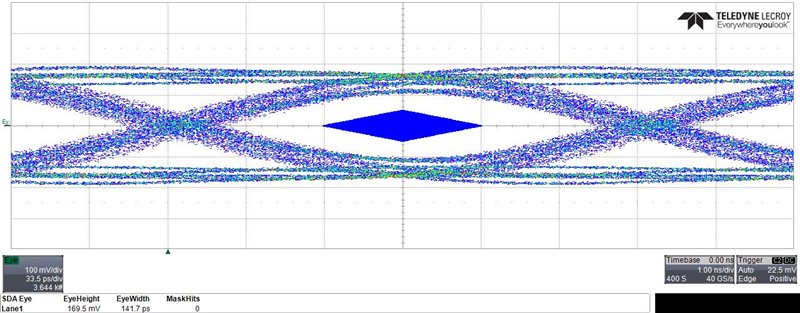 Figure 4 A Passing Eye Diagram with the
TUSB544 Inside a 3m USB Type-C
Cable
Figure 4 A Passing Eye Diagram with the
TUSB544 Inside a 3m USB Type-C
CableTo enable even longer USB Type-C cables, you can place two TUSB544 redrivers at both ends of the cable to provide enough channel-loss compensation. You will see excellent performance as well with a 5m USB Type-C cable that has a TUSB544 placed at each end, as shown in Figure 5.
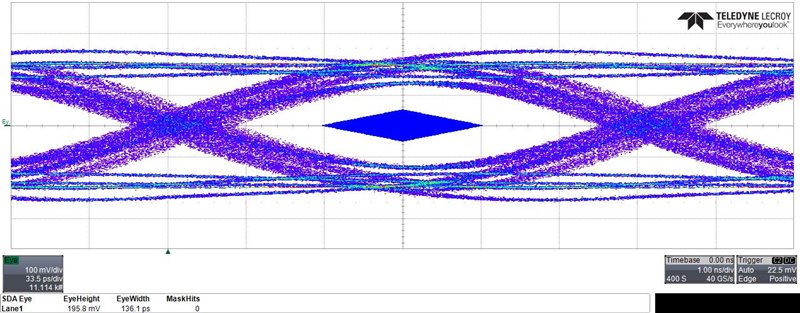 Figure 5 A Passing Eye Diagram of a 5m
USB Type-C Cable with Two TUSB544 Devices at Each End
Figure 5 A Passing Eye Diagram of a 5m
USB Type-C Cable with Two TUSB544 Devices at Each EndThe TUSB544 offers flexibility when redriving USB Type-C signals for USB and DisplayPort applications to deliver clean and excellent signal quality. It helps systems pass compliance tests, enables better interoperability and improves USB Type-C system performance.
Additional Resources
- Download the TUSB544 data sheet.
- Read the white paper: “Alternate Mode for USB Type-C: Going Beyond USB”.
- Watch the video: “Strengthening signal chain through signal conditioners”.
